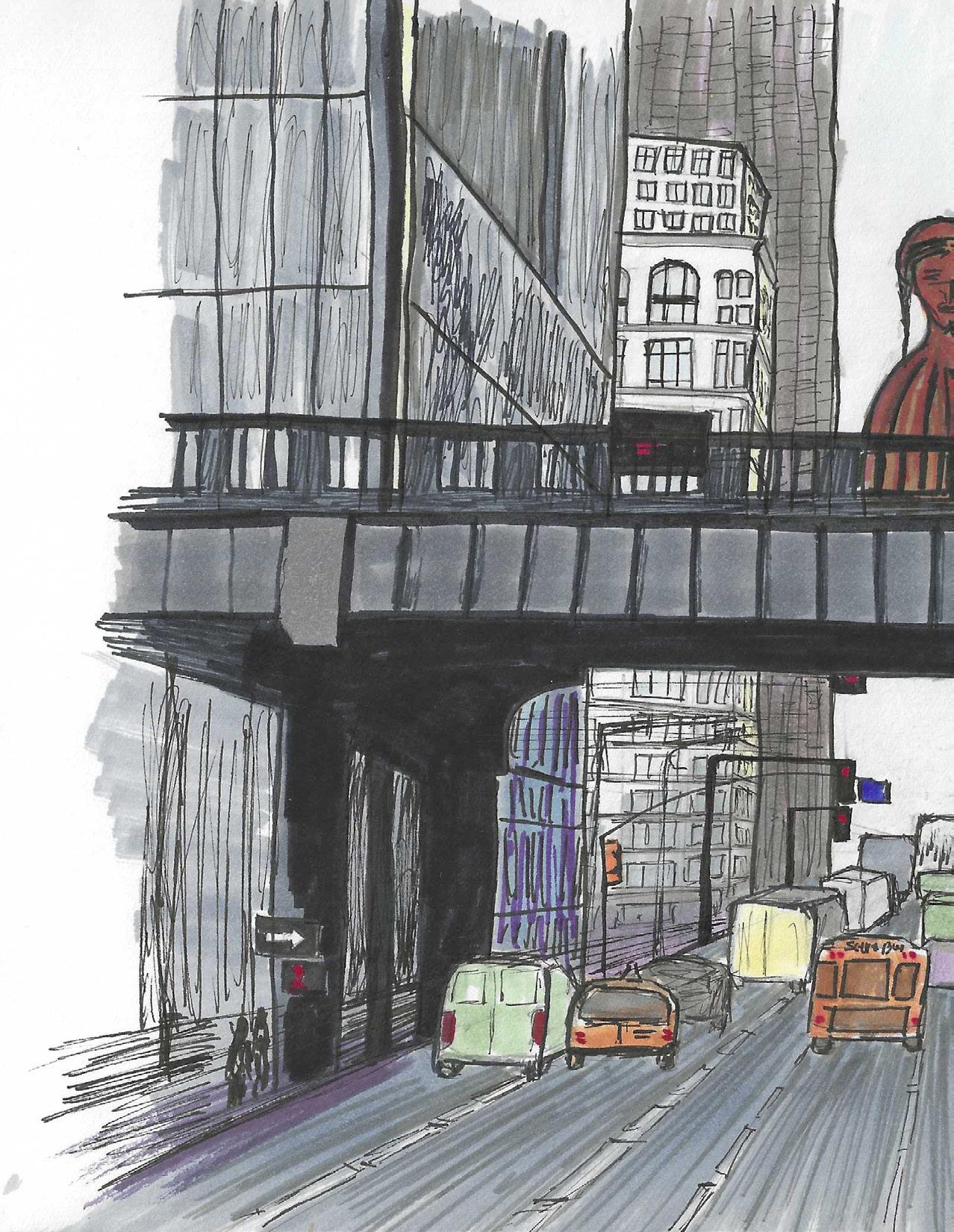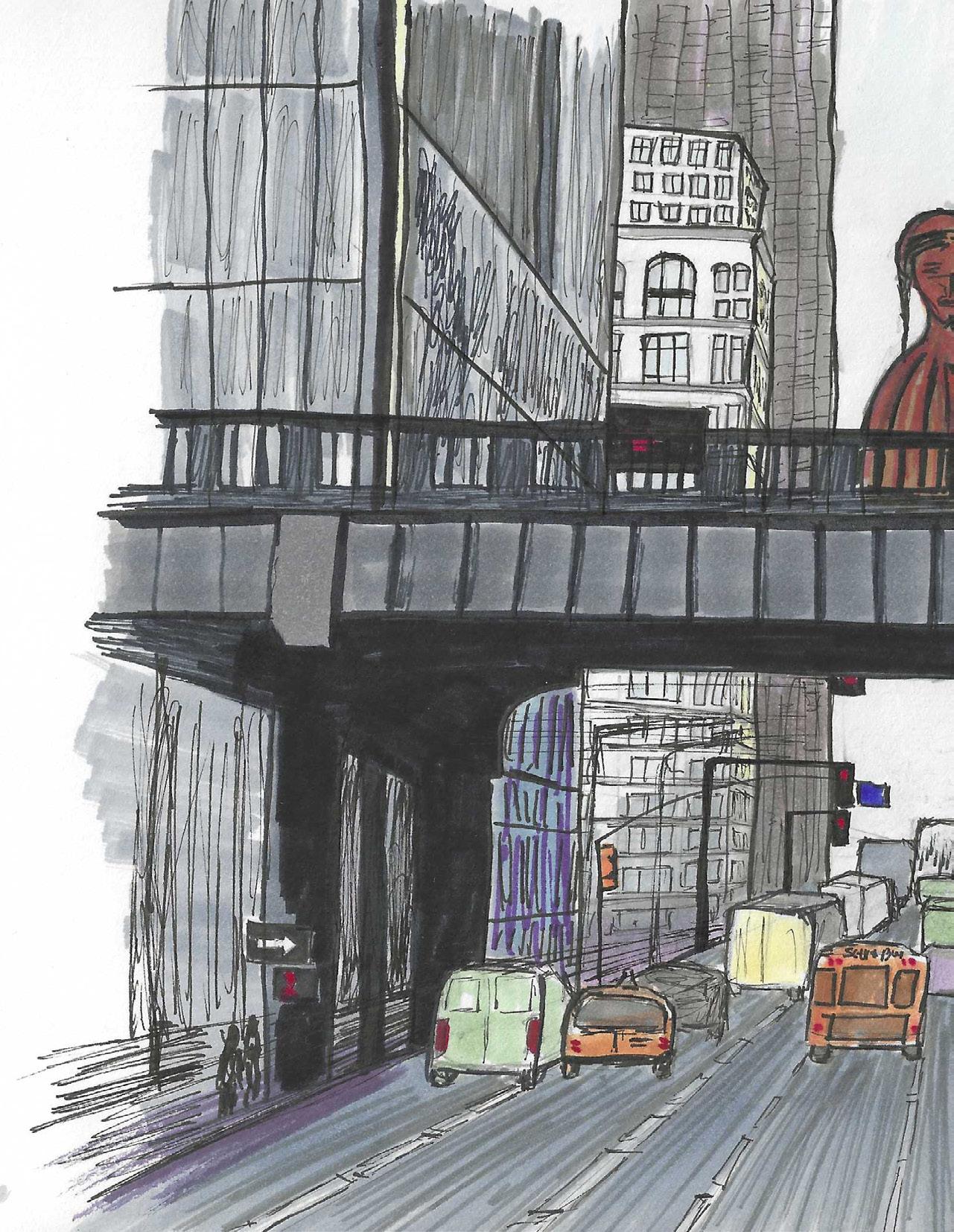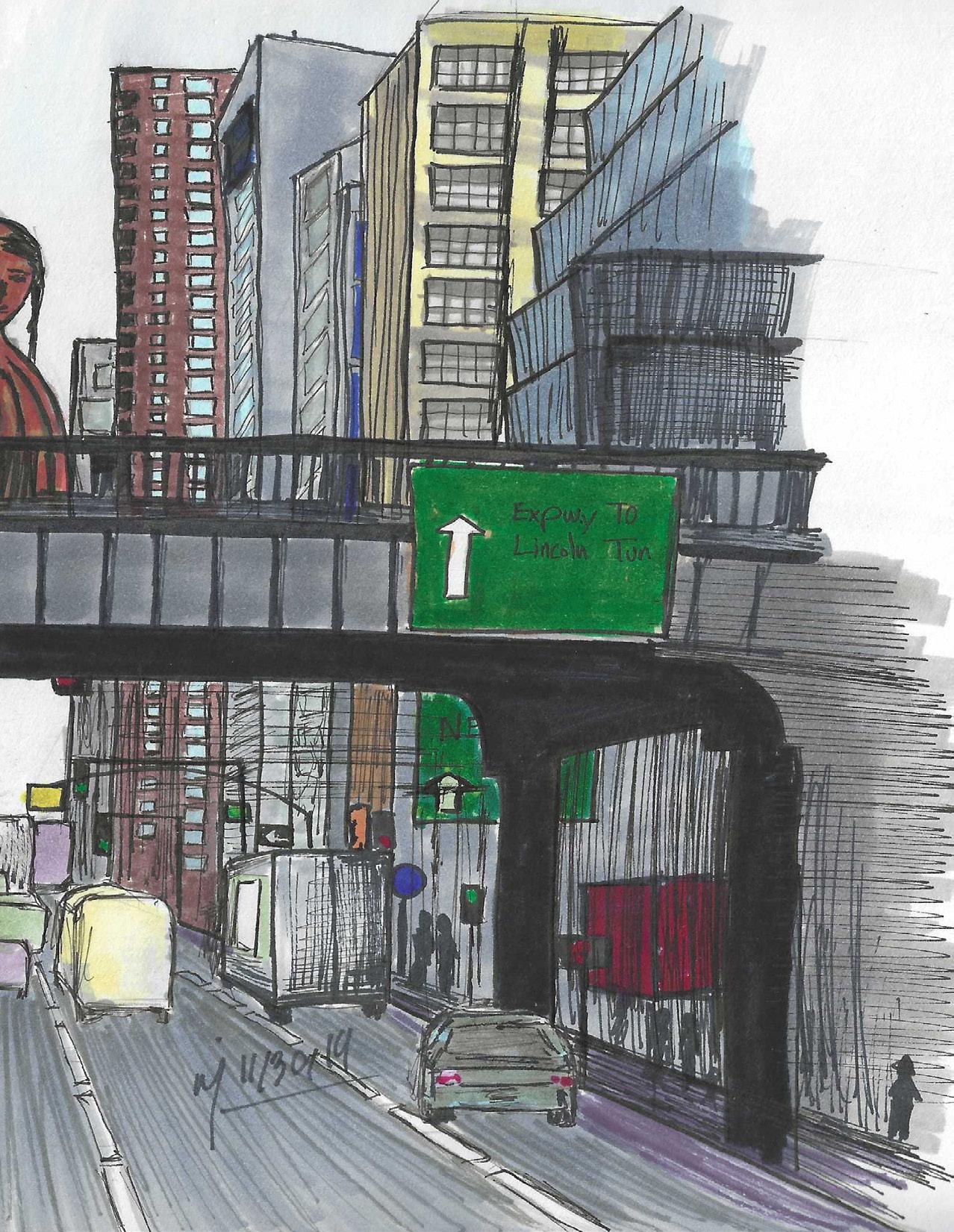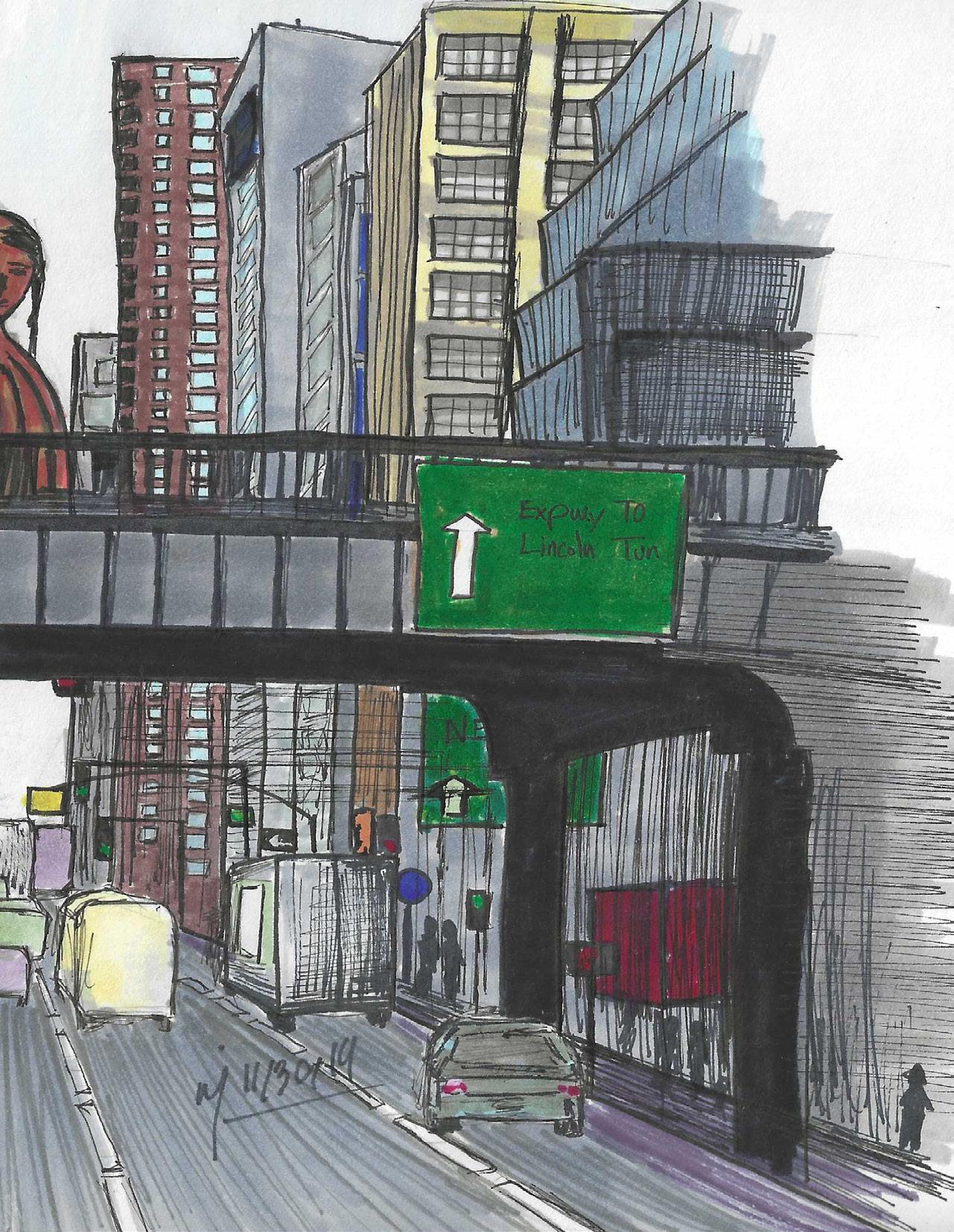
8 minute read
Urban Design: W.I.M.B.Y
from PYLON: SEP|OCT Issue
by AIA Brooklyn
What’s In My Back Yard
(W.I.M.B.Y.)
Advertisement
ARTICLE BY JANE MCGROARTY, AIA
Revisiting Downtown Brooklyn
In 2018 I prepared an Urban Design report entitled And You Thought Downtown Brooklyn Was Full? I described the new and planned (mainly residential) construction and what I believed were the impending issues of school capacity, open space, infrastructure that this amount of development would require. In the flurry of activity for the 125th Anniversary the report never made it into the PYLON. Two years later I think it’s time to take another look at Downtown Brooklyn development.
The Covid-19 pandemic hit New York City in March 2020, and although the cases diminished over the summer, a so-called ‘second wave’ seems to be imminent. The pandemic has affected residential rents; prices are down 17% in Downtown Brooklyn in the past year, according to M.S.N., a Williamsburg real estate company. However, in relation to Manhattan, the Brooklyn market is strong, especially as landlords are offering incentives, such as several months free rent, to induce customers. Douglas Elliman reported that sales of Condos, Co-ops, and 103 family homes are down 40% in 2020 in Brooklyn. This is not reassuring news to developers with new apartments coming onto to the market.
In 2018 there were 5600 new residential units planned or under construction in Downtown Brooklyn and its nearby neighborhoods. Today that number has grown to over 6670, a 19% increase. On a positive note, an additional 335 units of affordable apartments have been added to the 400 that were on the books in 2018. In addition, the alteration to an existing building at 50 Nevins will provide much needed single room occupancy and supportive housing. Breaking Ground, a well-regarded supportive housing developer, will be converting the former Jehovah Witnesses hotel at 90 Sands Street into 491 units of affordable and supportive housing. Breaking Ground, unlike other affordable housing, believes that decent housing is crucial to providing a safe and supportive home to homeless people, to the mentally ill, to veterans with PTSD, to former inmates — all of whom have struggled to find housing that will accept them. This conversion will be beneficial to the neighborhood.
The bad news is that the progress of public investment to support this massive new residential construction has been slow. Remember that when the plan for downtown Brooklyn was first unveiled, it assumed 90% commercial and 10% residential uses. New schools, open and public space, local retail, street safety, and mobility have
The Co-working Lounge at The Hoyt. Other amenities include an indoor saltwater lap pool, a squash court, a fitness center, game room, and a 32nd floor Sky Club with private dining and entertainment spaces with breathtaking panoramic views. Photo courtesy of The Hoyt.
emerged as important issues in Downtown Brooklyn.
For example, there is very little open space in the area. Willoughby Square, a planned park atop an underground garage, is still not completed. The original garage developer pulled out of the project, However JEMB Realty, the developer of One Willoughby Square, a Class A office building, took over the underground garage project and park, in exchange for air rights. The new park, designed by George Hargreaves, has been slow to move forward. The park is estimated to open in 2021. The neglected Sixteen Sycamores Park on Schermerhorn, near Nevins Street, needed to be upgraded and made more hospitable. While some new residential buildings have indoor and outdoor amenities, such as pools, roof decks, and gyms, many do not have these features (and for those that do, the accoutrements are not always child friendly).
Public school enrollment will inevitably increase, and we can’t always rely on the development community to provide new schools. There are two schools planned for 80 Flatbush and one at One Willoughby Square, but it is not clear if these schools will be sufficient to meet future needs. Transportation, fortunately, is abundant in the downtown area but the MTA is facing a severe budget crisis. Coupled with a decline in ridership as a result of Covid-19 and an increase in car traffic and mobility still plague downtown Brooklyn. The NYC DOT is to be congratulated for implementing Jay Street Busway in August 2020. Seven bus lines with 45,000 riders a day experienced frustrating difficulty along Jay Street in Metrotech. DOT established dedicated busways in both directions and prohibited all though-traffic between 7am and 7pm on weekdays. The result has been improvement in bus service, safer boarding for bus riders, and safer crossings on Jay Street for pedestrians.
There are some large projects on the market today. On the luxury end, The Hoyt and One Clinton are marketing units with several real estate firms. The Hoyt, designed by Jeanne Gang with Hill West as associated architects, has 480 units ranging in price from $710,000 to $4,300,000. There is a slick website with a video depicting a lifestyle and design that is modern and luxe. The completion date is June 2021.
The Hoyt’s main competition is One Clinton, designed by Marvel Architects. The online marketing is more restrained than the Hoyt’s, but its site the overlooking Cadman Plaza park is better. One side of the tower looks out on a green civic space and Brooklyn’s stately Borough Hall. The other side, at the higher floors, faces New York Harbor and Downtown Manhattan. Some of the floorplans are unusual, if awkward, due to the wedge shape of the building. One Clinton only has 134 apartments and another 114 affordable units offsite.
One Clinton should be completed in early 2021. The promised new by summer of 2021. The Brooklyn Public Library sold the Cadman Plaza Library for $52 million. The developer of the new residential tower was to provide space for a new improved library in the building.
In addition to The Hoyt and One Clinton, six more large projects are in the pipeline. The Amberley, at 203 Jay Street, is a rental apartment building with 270 units with retail and commercial on the lower floors. Nine Dekalb (the Dime Savings Bank supertall) will have 417 units at the upper levels of its 72 floors. Like some of the other projects in construction, the developers are leaving their options open regarding rental vs. sale of apartments.
Outdoor space at the Hoyt. Photo courtesy of The Hoyt
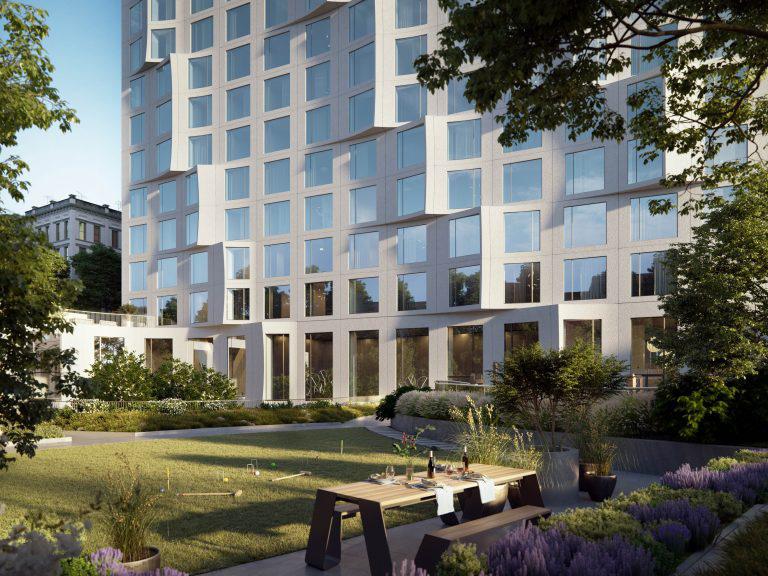
One Clinton. Photo Courtesy of Hudson Companies and Marvel Architects
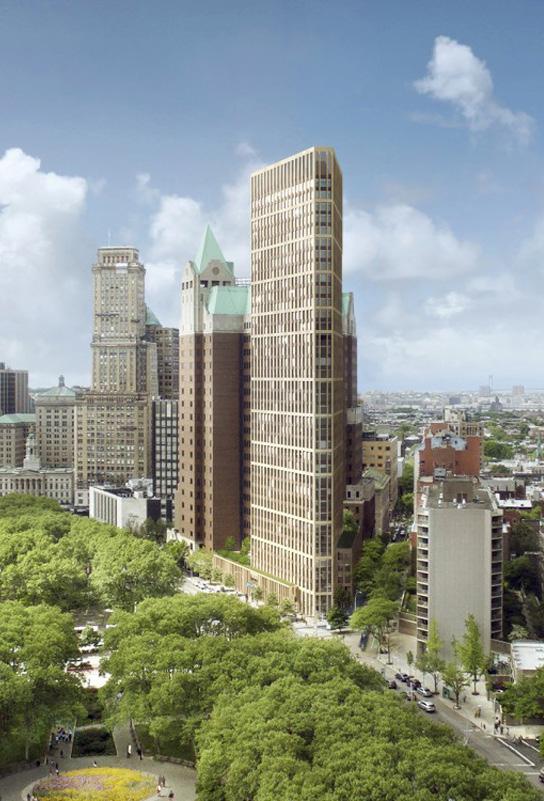
Front & York (85 Jay Street) is a 408-unit condo and a 320-apartment rental portion. There is also retail and commercial on its site in Dumbo, formerly owned the Watchtower. The design by Morris Adjimi references the industrial aesthetic of the early 20th century Brooklyn waterfront. The amenities are in line with The Hoyt and include is a private 23,000 square foot park designed by Michael Van Valkenburgh Associates, the designers of Brooklyn Bridge Park. Jane Margolies of the New York Times highlighted the project in 2019 with the headline: They Took a Parking Lot and Put up a Paradise.
The Paxton is a 43-story mixed use residential building under construction at 540 Fulton Street design by Marvel Architects. It describes itself as having 309 ‘stylish rentals.’ There will also be 96 affordable apartments as part of the development
Under construction is a 286-unit building at 169 Tillary Street, also known as 260 Gold Street. The Project was designed by J Frankl Associates (JFA). Eighty-two of the units will be affordable with the lottery set at 130% of area median income under the 421a program (which provides a lowered real estate tax for a certain period). Studio apartments will rent for $2241 per month. With downtown Brooklyn studio apartments ranging, on average, from $1800 – $2300 per month, these new studios at 260 Gold Street are essentially market rate. Affordable housing is sorely needed in the city but when it costs the same or more than market rate housing, it doesn’t seem to be the best use of a tax break.
As 2020 grows to a close, it’s hard to tell the future of the market in Downtown Brooklyn. After years of avoiding building commercial space, developers are seeing a future for office space. One Willoughby Square is a 500,000 sf Class A office building designed by FxFowle and due to open in 2021. On the former site of the Institute of Design and Construction, SLCE and Fogarty Finger have designed a mixed-use project with retail, a commercial tower, residential, and student housing.
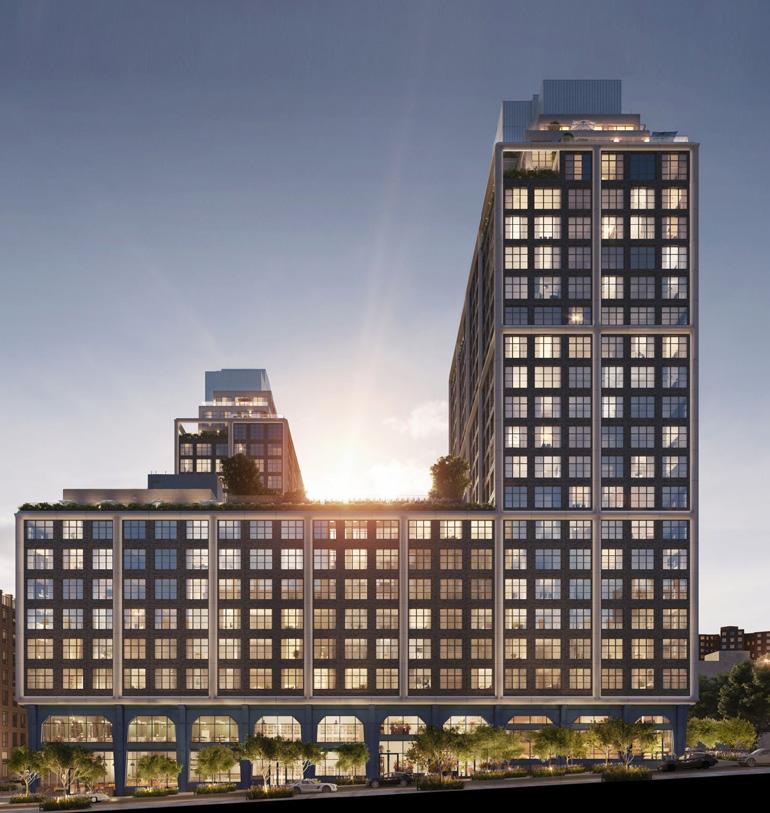
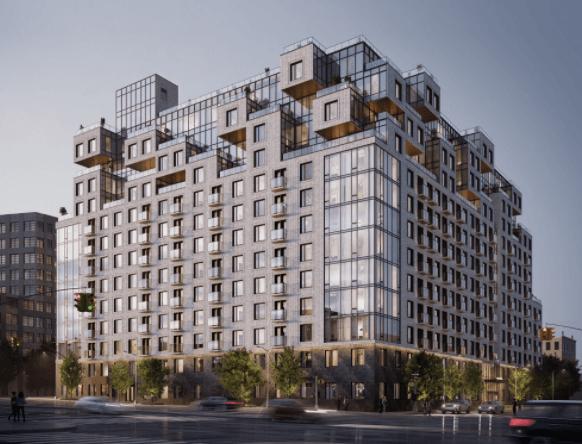
Rendering of 260 Gold Street. Photo courtesy of J. Frankl
We hope that by the end of 2021, life may come back to normal, if the new vaccines prove effective and are available. But I think we are going to have a different city. If we have learned anything from the pandemic, it is that NYC (and the nation) were not prepared for a crisis of this magnitude. It showed us that the front-line workers in health care, small businesses, police, fire, sanitation and, transportation are crucial to the safety and well-being of the public. New York cannot afford to think of resiliency simply in terms of climate change. We need economic and social resiliency in order to strengthen communities by providing the means to thrive and come back from upheaval and change.
MY RESILIENCY BLUEPRINT FOR THE NEXT MAYOR
1. Create a new City Plan 2. Do not allow spot or up zoning or increased
FAR until a plan is completed 3. Create new parkland where there is increased new development, pending a new plan 4. Invest in education at all levels 5. Tie transit improvements to development and fully fund the capital program 6. Preserve existing affordable housing and build more supportive housing 7. Support small businesses and create manufacturing zones to encourage local production 8. Provide economic incentives to homeowners and smaller apartment houses to reduce the use of fossil fuels
“Highline-NY” drawing by Noushin Jafari, Assoc. AIA
